Morrison’s winter smallmouth recipe
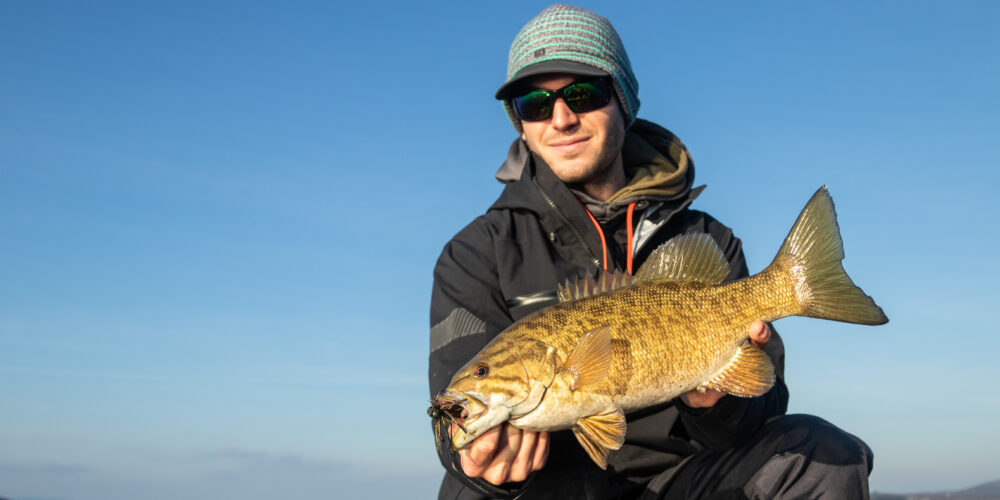
In the wintertime in the Northeast, there’s surely a lot to be said for hanging garland or hunting deer, but the smallmouth fishing is also pretty top-notch. Living near Lake Champlain and not far from Lake George and other productive wintertime fisheries, Alec Morrison is all about some late-season smallmouth.
The Tackle Warehouse Invitationals rookie-to-be shared a few tips for how you can continue to boat brown bass even as the temperatures plunge.
Don’t overthink things
Once you’ve decided to add the late season to your repertoire, you can take a lot of tackle out of the boat.
“Really, you probably can’t go wrong just keeping it simple,” Morrison said. “This time of year, they’re not typically feeding up so much — as in looking up and feeding mid-water column. They’re all going to be relating to bottom, or a lot closer, and typically grouping up a lot more.
“There’s really just a few approaches that you can stick with and cover all the aspects of what they’re probably biting. I pretty much just keep it simple this time of year and use a couple different techniques to fish on bottom or close to it.”
Finding the mother lode
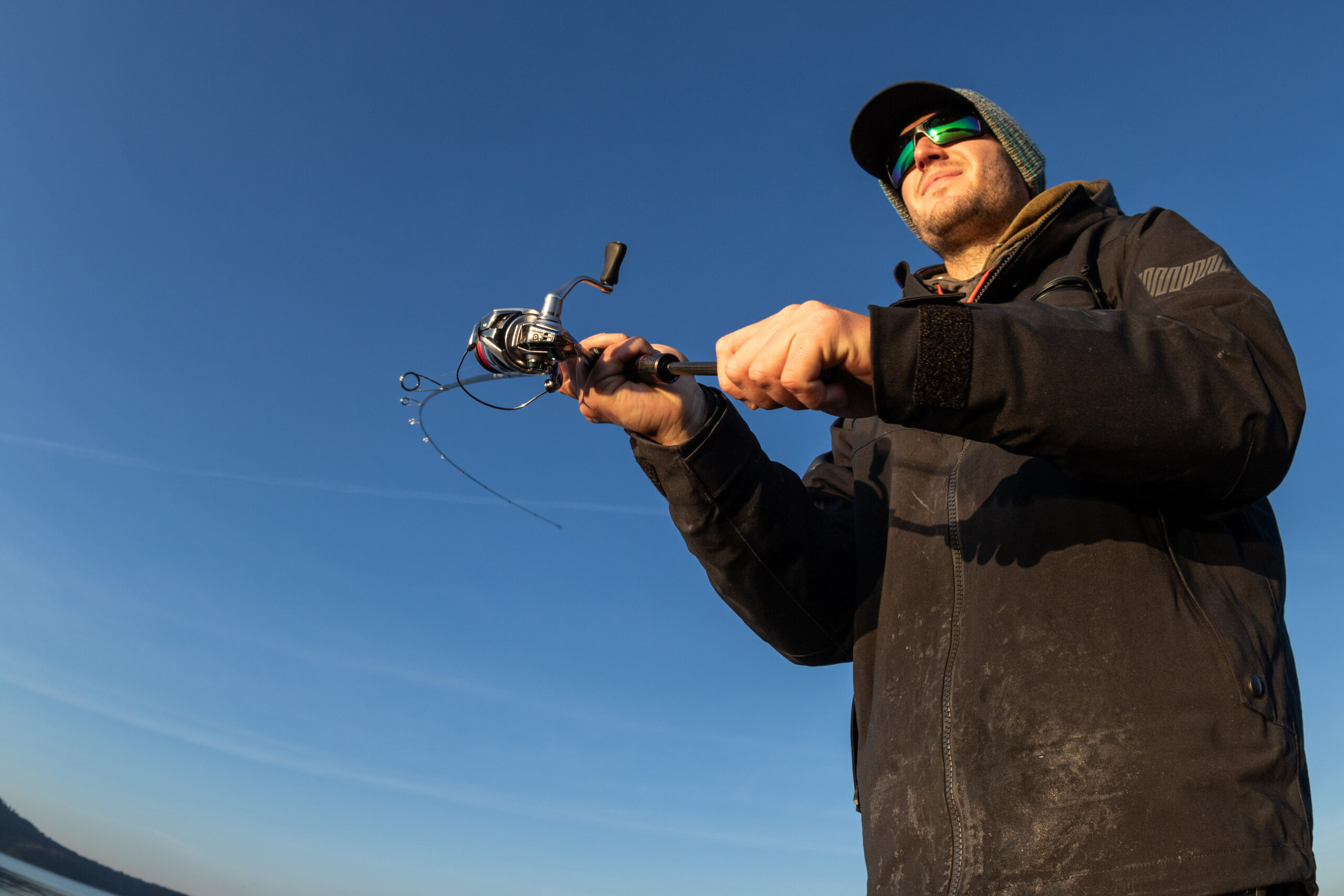
Probably the most difficult part of wintertime fishing is finding concentrations of bass. There will always be a few fish on deeper summertime areas or isolated boulders and the like, but finding the areas where fish congregate in large numbers can turn an ordinary day of fishing into a great day.
“It’s kind of cool because some of the best wintering areas I have on Champlain are oftentimes places that you won’t really catch them the rest of the year, even in the summertime when they are deep,” Morrison said. “I think a lot of that has to do with how much bait is in an area or how much bait is passing through one of these areas. In the winter they’re obviously a lot colder and are not going to be able to just chase down bait. As much as they might want to, they’re moving a lot slower, and their metabolism is a lot slower.”
Morrison doesn’t look too far from summer areas for the winter mother lode, but he does look for softer features.
“There might be a section of the lake where you catch them on deep points and stuff like that in the summer, around good rock and things of that nature,” he said. “In the wintertime, they might just pull out a little bit further and get on some softer bottom sections. On Champlain, it seems to be really good to be around 30- to 50-foot, relatively soft bottom. And then if you can find transition lines with sand or patches of sand that kind of intersect, that’s just a really good location for them to be.”
Still, the right combination of substrates isn’t a guarantee.
“I’ve found some stuff that sets up right in years past, but they may not get on it in the wintertime,” he said. “Even though it sets up right, they’re not there. I think a lot of it has to do with the bait not being there all winter, whereas I have other wintering areas where I can count on them to be in there every single year and can basically just show up and drop the trolling motor and put it on Spot-Lock and there’s going to be a large population of fish on the area.
“You will get fish this time of year that set up on things that you would catch them on in the summertime,” he continued. “But really, those large populations I find this time of year are around the soft bottom and sand and those type of basin areas.”
The tackle essentials
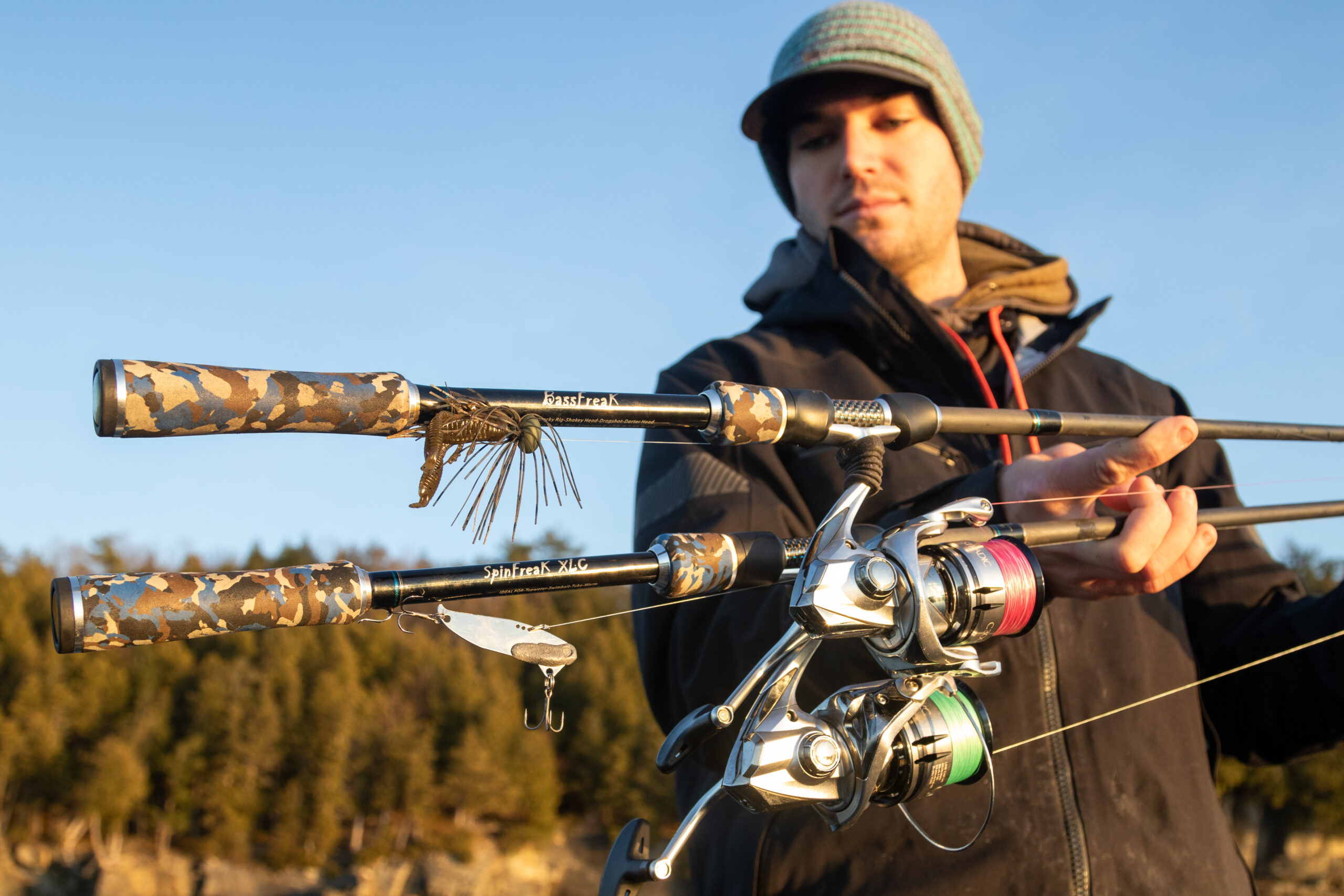
According to Morrison, the three necessary baits for the wintertime are a football jig of some sort, a Ned rig and a blade bait.
“I like keeping it simple with a few different bottom presentations, one of those being a football jig,” he said. “I fish the Beast Coast O.W. Sniper. It’s essentially a finesse football head that is just real compact. In around 15- to 25-foot the 3/8-ounce works really well; for the 25- to 50-foot stuff I’ll throw the 1/2-ounce version. I like keeping it simple on colors — just dark colors, green pumpkins, blacks, browns, anything of anything of that nature.”
Morrison leans on two craw-style trailers: the Reins Ring Craw and the Reins G-Tail Twin.
“I really like using the 2 1/2-inch Ring Craw,” he said. “That’s a small craw. It basically just keeps the jig real nice and compact and you get real subtle action. It’s just something easy and manageable that you can fish on spinning gear and get good bottom contact with while also offering a good jig presentation that you know fish all over the country are going to be drawn to during the months when the water is colder.
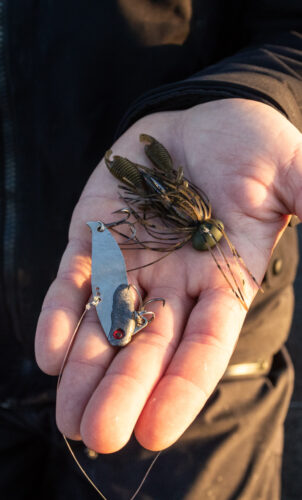
“The second variation of trailer that I’ll often use is your old-school twin-tail grub style trailer. The one that I like is the 3-inch G-Tail Twin. The two appendages on the back probably aren’t as large as some other offerings on the market — they’re really toned down and thin appendages. Compared to the Ring Craw, it’s just going to offer a little bit of a different presentation.”
Probably Morrison’s favorite bait in the winter is a blade bait.
“If I you could only have one bait this time of year, for me it would probably be a blade bait. It’s just a proven bait. It’s honestly amazing how well they eat that this time of year.”
He keeps it super simple, going with a 1/2-ounce Do-It Molds blade bait in silver about 90 percent of the time.
“For the most part, it’s good anywhere from 25- to 50-foot, and the 1/2-ounce just allows you to get the bottom really quick,” Morrison said. “I’m not necessarily really jigging it hard. I’m basically just giving it erratic hops and getting it to vibrate quickly, but probably only coming off the bottom about half a foot or a foot before I’m giving it slack and letting it fall straight back down, and then just repeating the process. I am fishing it relatively fast and erratically, but it’s never really moving forward all that far. In some scenarios with fish that may not be in the best feeding mood, you can definitely get them to react to the blade bait.”
RELATED: Scott Dobson’s blade bait system
A Ned rig also takes top billing for Morrison, especially when fish are a little more sluggish or the water is a little colder, like in the early spring.
“At first I’m going to grab the blade bait or the football head, but the Ned can really be a great cleanup bait,” he said. “It just seems like when the water is in the low 40s or even colder, down in the high 30s, it is a do-nothing finesse approach, and there’s something about it this time of year. Also, in early spring, at ice-out, that Ned will just really shine if you are on some fish where you’re getting a few to bite, but maybe a decent number of them aren’t committing.
“The setup I throw is a Reins RND Fat. That’s a 3 1/4-inch bait that is really small. I fish that on anything from like a 1/8- to a 3/16-ounce Reins NR Jig Head, which is a tungsten head. The tungsten gives you some added feel, especially for fishing it down deep, and you can use a little bit heavier weight and keep it in a pretty compact little finesse profile. It is a really good option for you to pick up some extra bites, and oftentimes I’ve had days where I’ve caught a bunch of fish on a blade and a football head and some of the biggest ones I would catch would end up being on the Ned rig.”
Spinning rods are king in the winter
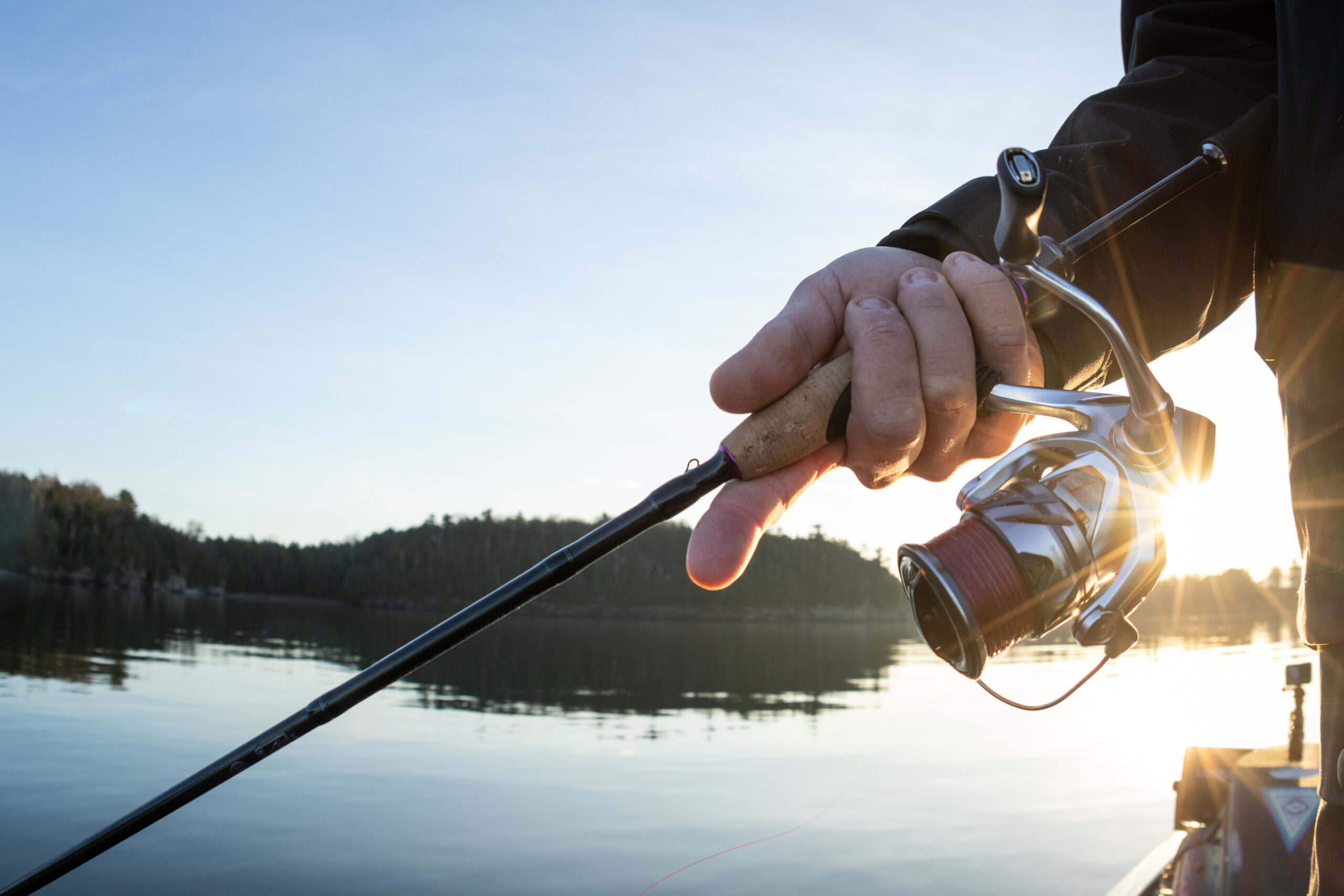
For Morrison, the winter is the time to stick with the spinning stuff. Most of the baits he throws work well with spinning gear, and a big factor in his decision-making is the weather.
When it comes to the blade bait, Morrison opts for a 7-foot, 8-inch rod with a fairly parabolic bend, which he says handles the bait well and gives him plenty of power to shoot the blade out there. Paired with a 4000-size spinning reel, Morrison feels he can pick up line very well.
Another reason he likes a spinning rod is for better cold-weather performance.
“Earlier in the year I had two blades set up, one on a spinning rod and one on a baitcasting rod, the day after Thanksgiving,” he said. “You literally could not use a baitcasting setup, because after every retrieve your guides would be totally frozen, or like the little eye on the level wind on the reel would be completely filled with ice. So, when it gets really cold, sometimes baitcasting gear just isn’t efficient.”
Worth braving the cold
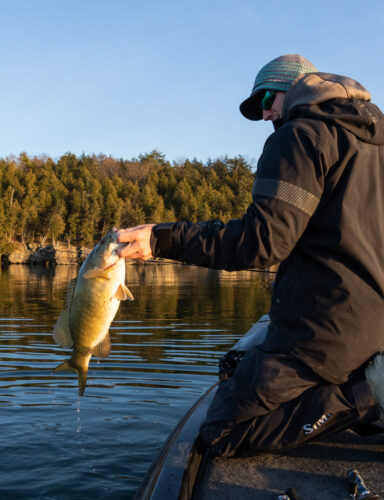
Though you obviously don’t want to fish in unsafe conditions, there’s a lot to be said for getting on the water in the winter.
“It’s never really a matter of figuring a bite out — it seems like you can find them and catch them really easily,” Morrison said. “The only thing you’re kind of battling out there is the elements, and you can dress properly and that will keep you out there on the fish.
“It is a really cool time of year, because you can get a lot of bites and have some big bags. And not a lot of people are out there. You may only see a couple of other boats all day. I’ve definitely had some incredible days on Champlain where not another boat was in sight all day. A lot of people are hunting and in the deer stand, and I love to do that too, but nowhere near as much as I love to catch bass.”